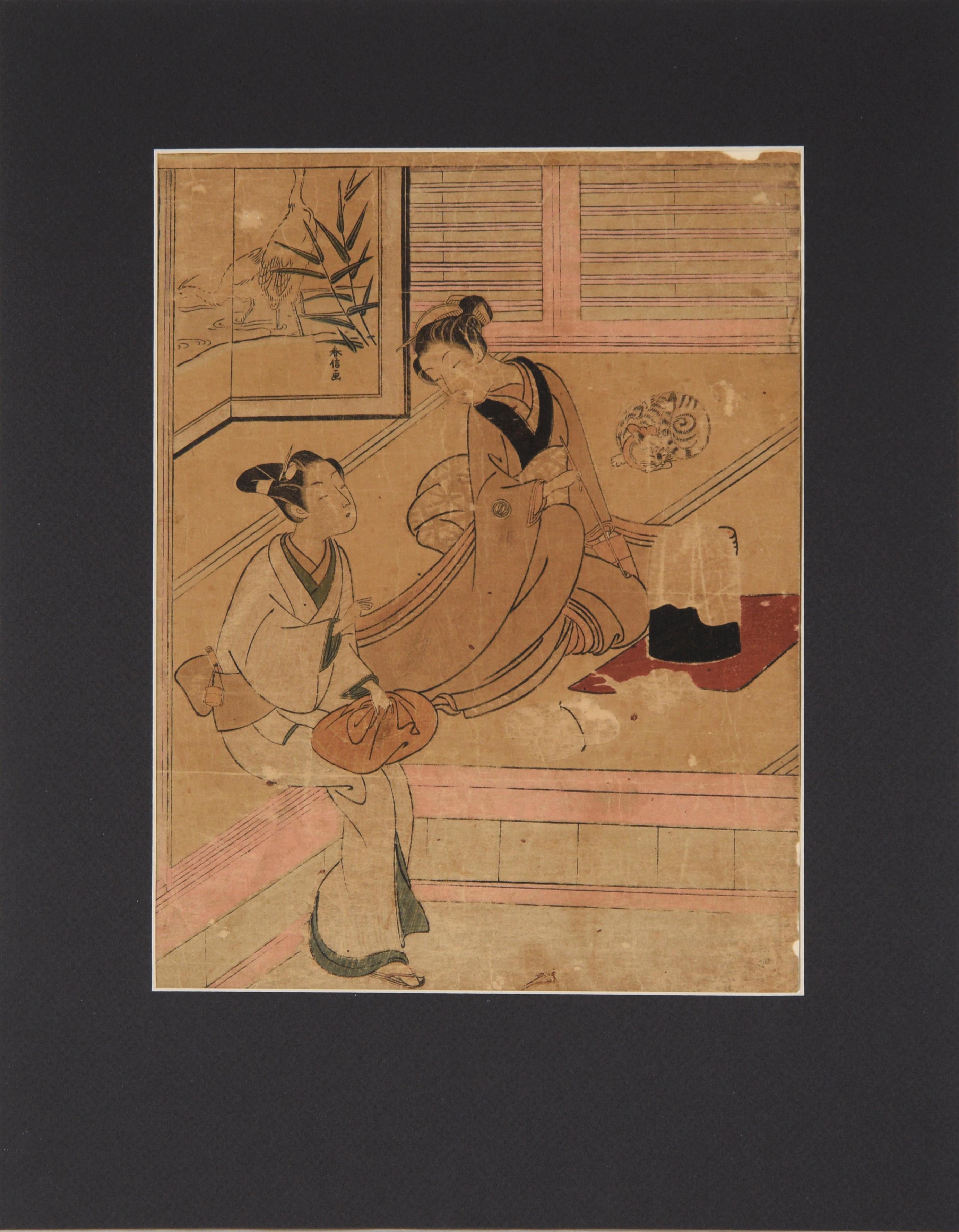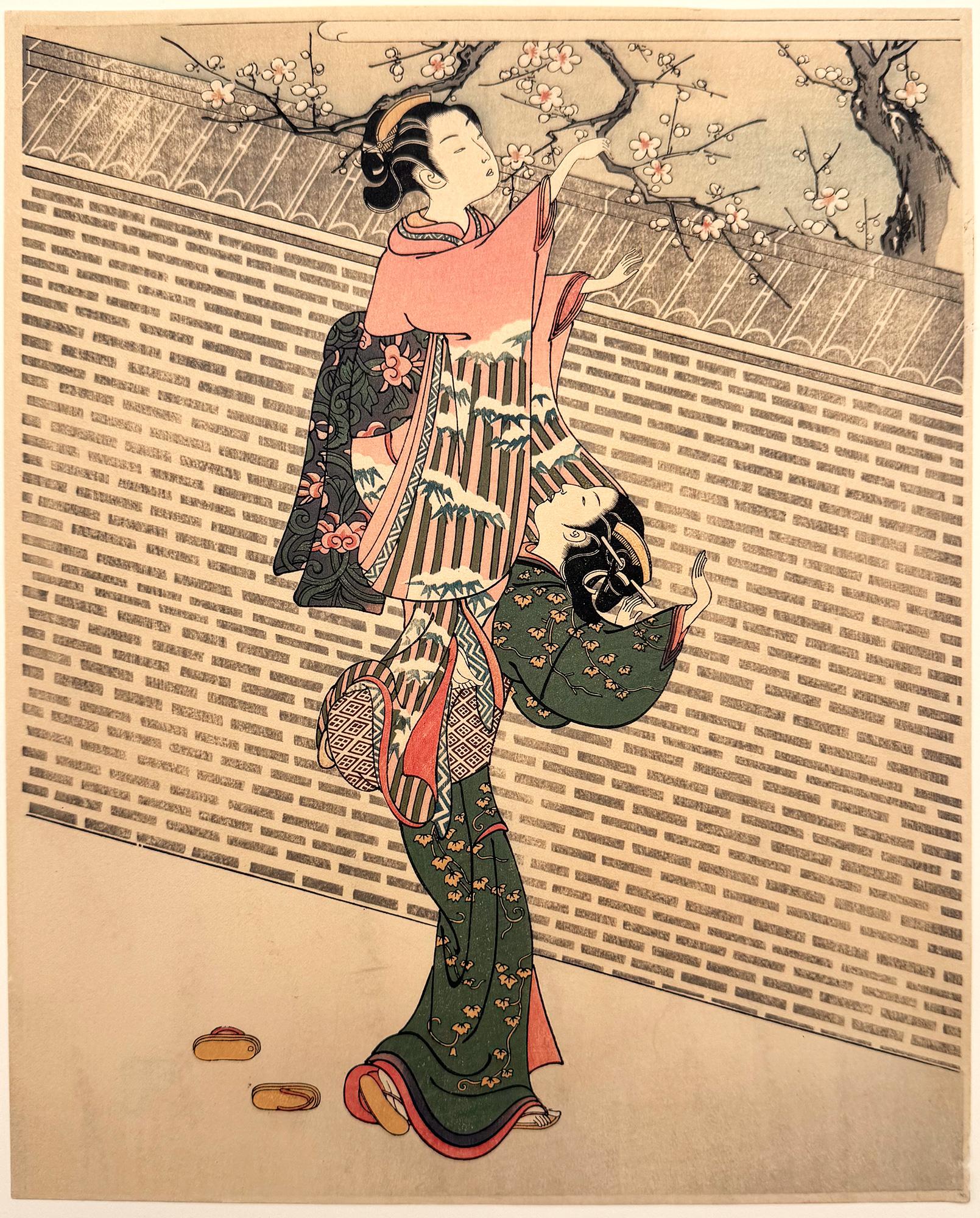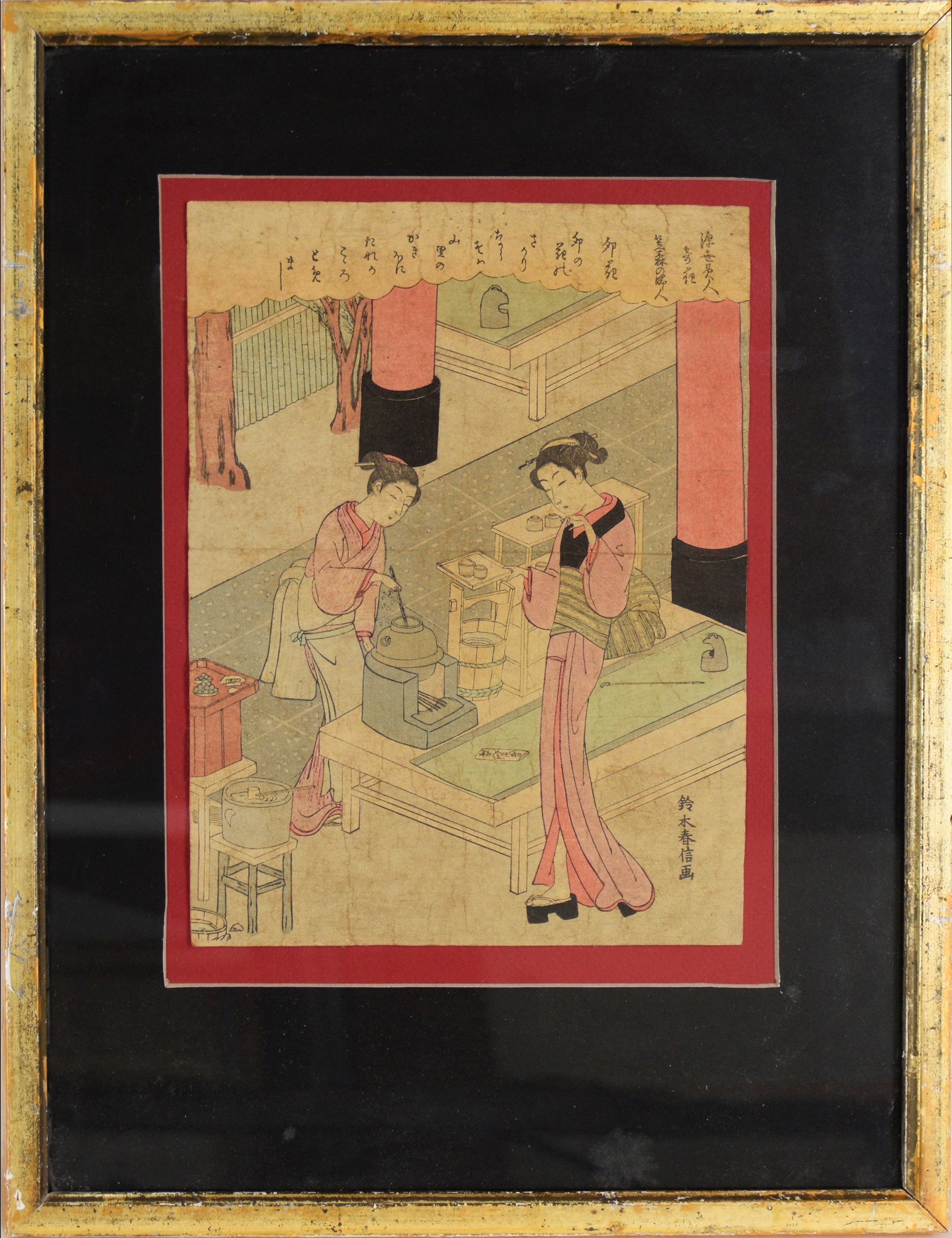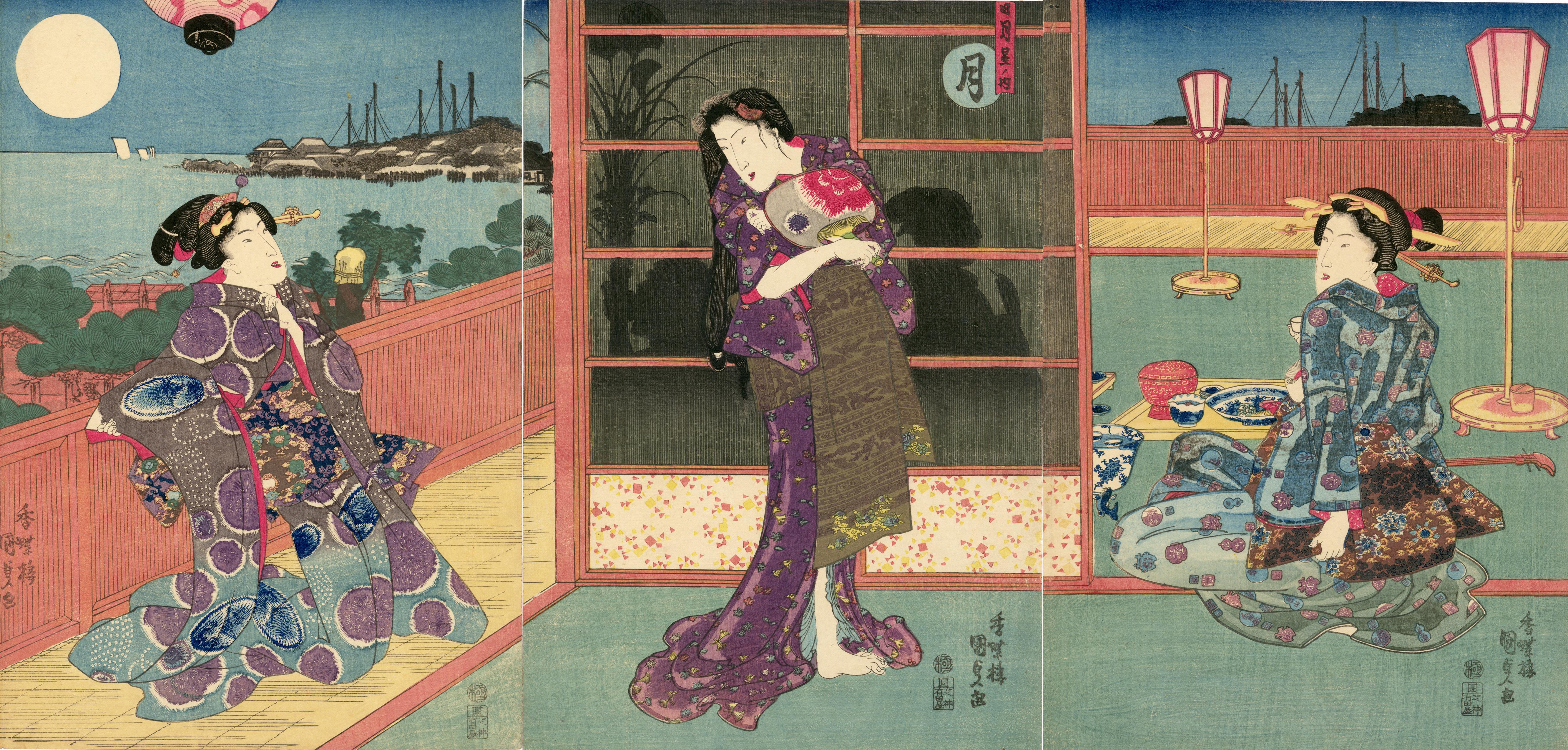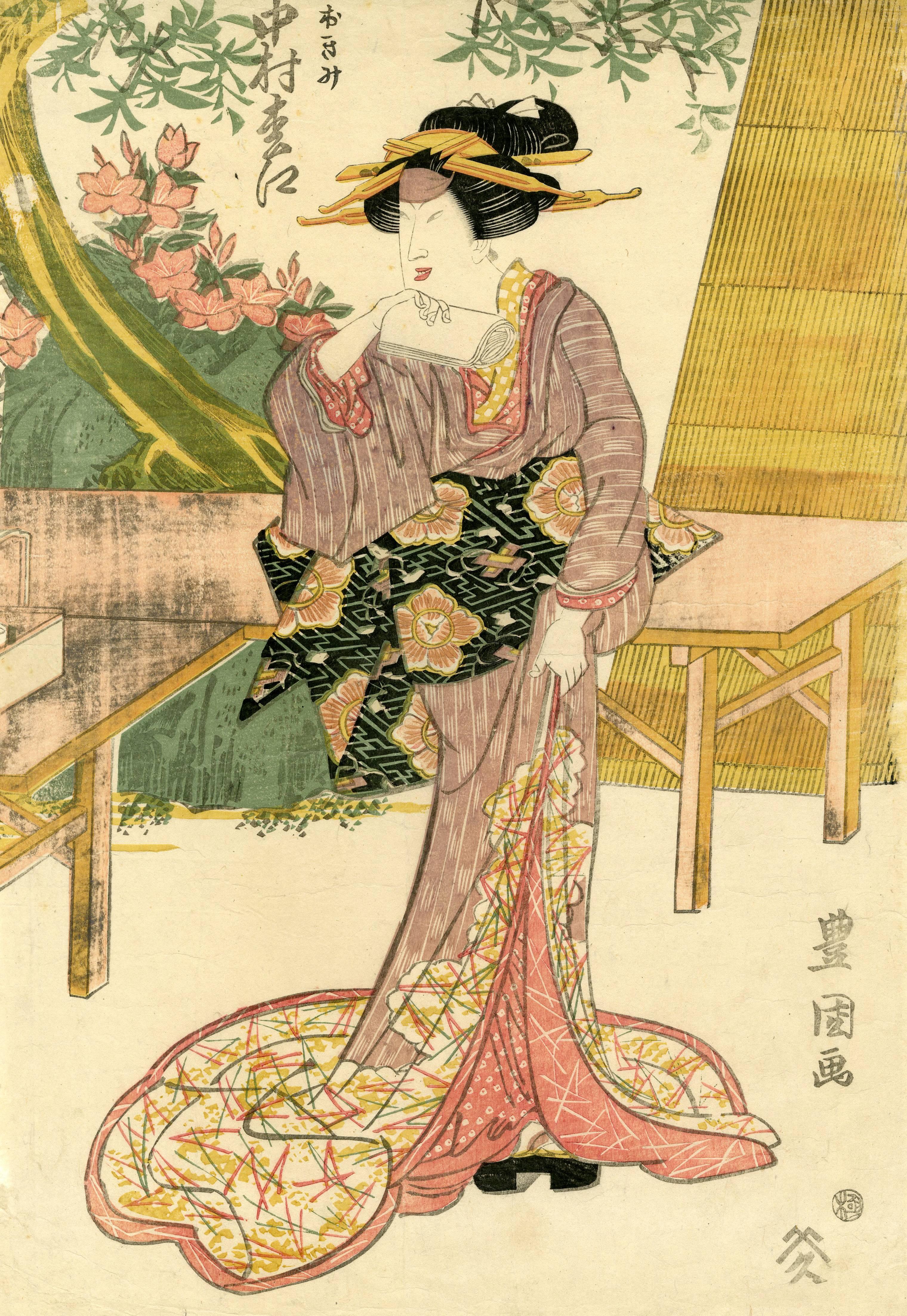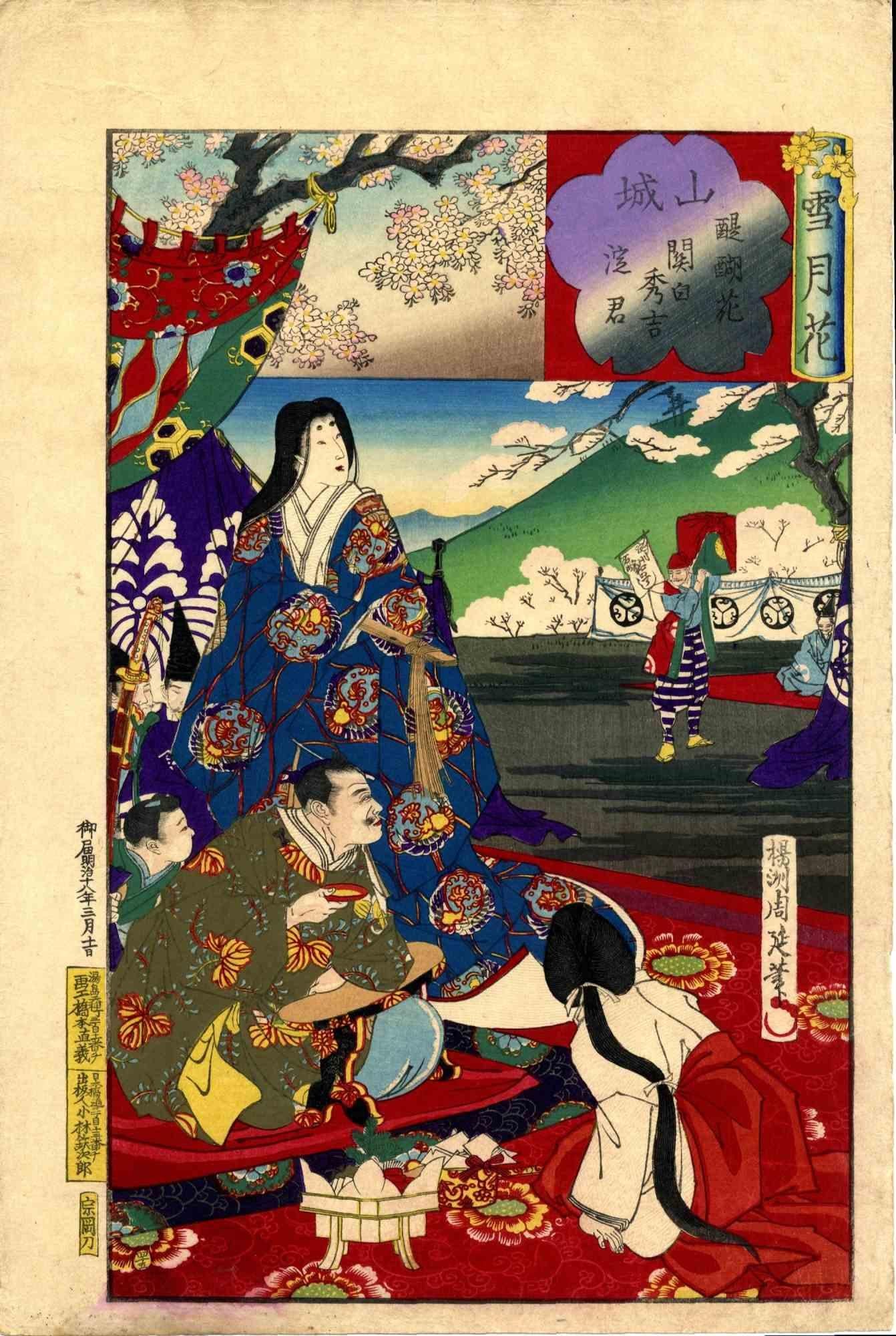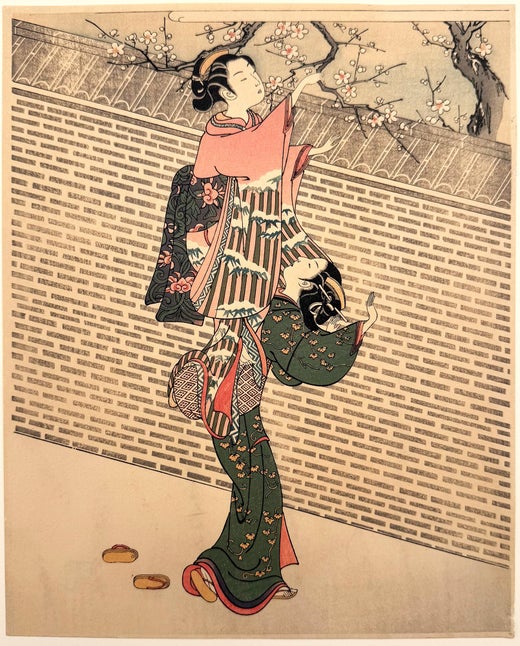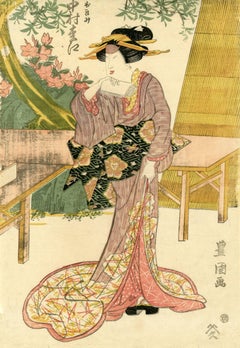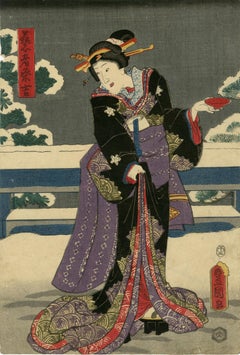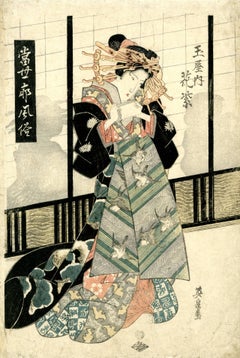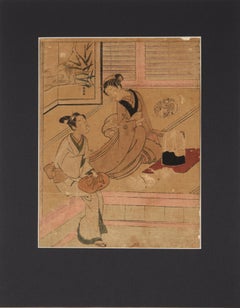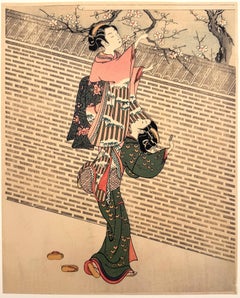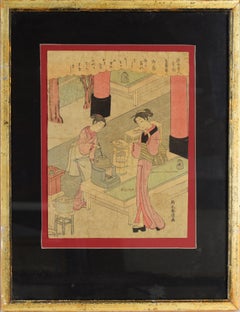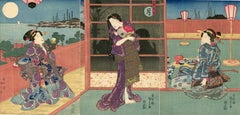Items Similar to Beauty on a Veranda with Fan and Mirror
Want more images or videos?
Request additional images or videos from the seller
1 of 8
Suzuki (Hozumi) HarunobuBeauty on a Veranda with Fan and Mirror1769-1770
1769-1770
$1,500
£1,163.06
€1,319.70
CA$2,150.19
A$2,338.02
CHF 1,231.91
MX$28,400.17
NOK 15,487.58
SEK 14,518.35
DKK 9,903.23
About the Item
Signed: Harunobu ga
Series: Series: Eight Fashionable Parlor Views (Furyu zashiki hakkei)?
Format Japanese: chuban
Provenance:
Private Collection, Philadelphia
Collection of McCleaf
Condition: Colors slightly faded, sheet with centerfold, trimmed and backed
Sheet size: 6 3/4 x 10 7/16 inches
- Creator:Suzuki (Hozumi) Harunobu (1724-1770, Japanese)
- Creation Year:1769-1770
- Dimensions:Height: 6.75 in (17.15 cm)Width: 10.438 in (26.52 cm)
- Medium:
- Movement & Style:
- Period:
- Condition:Colors slightly faded, sheet with centerfold, trimmed and backed.
- Gallery Location:Fairlawn, OH
- Reference Number:Seller: UK20601stDibs: LU14013160622
Suzuki (Hozumi) Harunobu
Suzuki Harunobu (Japanese: 鈴木 春信; c. 1725 – 8 July 1770) was a Japanese designer of woodblock print art in the ukiyo-e style. He was an innovator, the first to produce full-color prints (nishiki-e) in 1765, rendering obsolete the former modes of two- and three-color prints. Harunobu used many special techniques, and depicted a wide variety of subjects, from classical poems to contemporary beauties. Like many artists of his day, Harunobu also produced a number of shunga, or erotic images. During his lifetime and shortly afterwards, many artists imitated his style. A few, such as Harushige, even boasted of their ability to forge the work of the great master. Much about Harunobu's life is unknown.
About the Seller
5.0
Recognized Seller
These prestigious sellers are industry leaders and represent the highest echelon for item quality and design.
Gold Seller
Premium sellers maintaining a 4.3+ rating and 24-hour response times
Established in 1978
1stDibs seller since 2013
819 sales on 1stDibs
Typical response time: <1 hour
Associations
International Fine Print Dealers Association
- ShippingRetrieving quote...Shipping from: Fairlawn , OH
- Return Policy
Authenticity Guarantee
In the unlikely event there’s an issue with an item’s authenticity, contact us within 1 year for a full refund. DetailsMoney-Back Guarantee
If your item is not as described, is damaged in transit, or does not arrive, contact us within 7 days for a full refund. Details24-Hour Cancellation
You have a 24-hour grace period in which to reconsider your purchase, with no questions asked.Vetted Professional Sellers
Our world-class sellers must adhere to strict standards for service and quality, maintaining the integrity of our listings.Price-Match Guarantee
If you find that a seller listed the same item for a lower price elsewhere, we’ll match it.Trusted Global Delivery
Our best-in-class carrier network provides specialized shipping options worldwide, including custom delivery.More From This Seller
View AllBeauty Otami - Kabuki
By Utagawa Kunisada (Toyokuni III)
Located in Fairlawn, OH
Beauty Otami - Kabuki
Note: Kabuki actor Nakamura Matsue is in the role of courtesan otami. She is standing in front of a small tea shop in a garden.
Color woodblock, c. 1800-1810
Si...
Category
Early 1800s Portrait Prints
Materials
Woodcut
Courtesan Kumekichi
By Utagawa Kunisada (Toyokuni III)
Located in Fairlawn, OH
Courtesan Kumekichi
Color woodblock, 1858
Kabuki Actor Iwai Kumesaburo III in the role of courtesan Kumekichi, who is standing in snow hold a red sake cup
Publisher: Ohkuniya Kinjiro...
Category
1850s Other Art Style Figurative Prints
Materials
Woodcut
Kataoka Nizayemon(?)
By Utagawa Kunisada (Toyokuni III)
Located in Fairlawn, OH
Exceptional, brilliant impression and colors from the extremely rare 1st edition
Kataoka Nizayemon(?)
Color woodcut, 1860
From the series: "Contemporary Brocade Mirror Portraits"
Pub...
Category
1860s Portrait Prints
Materials
Woodcut
Tamaya Nishi, Hana-murasaki (Purple Flower)
By Keisai Eisen
Located in Fairlawn, OH
Signed: Keisai Eisen ga;
Seal: Kiwame
Series: Contemporary Scenes in the Pleasure Quarters
Publisher: Wakasaya Yoichi
Note: This is a famous ...
Category
Early 19th Century Figurative Prints
Materials
Woodcut
Inari Kozo Tasaburo- Kabuki
By Utagawa Toyokuni
Located in Fairlawn, OH
Inari Kozo Tasaburo- Kabuki
Color woodcut, c. 1820
Signed: ‘Toyokuni’
Publisher: ‘Yamamoto Heikichi’
Censor: Hama and Magome
Very good impression and color
Sheet/Image size: 15 1/2 x...
Category
1820s Other Art Style Figurative Prints
Materials
Woodcut
Thirsty: The Appearance of a Town Geisha - a So-Called Wine-Server - in the Anse
By Taiso Yoshitoshi
Located in Fairlawn, OH
Thirsty: The Appearance of a Town Geisha - a So-Called Wine-Server - in the Ansei Era
Color woodcut, 1888
Signed; Seal: Taiso (see photo)
Plate 22 from the series "Thirty-two Aspects...
Category
1880s Showa Figurative Prints
Materials
Woodcut
You May Also Like
Japanese Original Woodblock Print
Located in Soquel, CA
Japanese Original Woodblock Print
Harunobu Suzuki (né Hozumi) (Japanese, 1724 - 1770)
Presented in a black mat.
Mat: 16"H x 12"W
Paper: 12"H x 9"W
I...
Category
18th Century Edo Figurative Prints
Materials
Ink, Rice Paper, Woodcut
Plucking a Branch from a Neighbor's Plum Tree
By Suzuki (Hozumi) Harunobu
Located in Middletown, NY
A mischievous tableau with sexual overtones.
Tokyo: Shuei-Sha, 1768.
Woodblock print in colors printed on laid mulberry paper, 10 3/4 x 7 7/8 inches (273 x 200 mm), full margins. I...
Category
Mid-18th Century Edo Portrait Prints
Materials
Handmade Paper, Watercolor, Woodcut
Deutzia Flowers: The Wife of Kasamori - Original Woodblock Print
Located in Soquel, CA
Deutzia Flowers: The Wife of Kasamori - Original Woodblock Print
Deutzia Flowers: The Wife of Kasamori, from the Series "Beauties of the Floating World Associated with Flowers" by S...
Category
1760s Edo Figurative Prints
Materials
Woodcut, Ink, Rice Paper
Japanese Beauties Enjoy a Full Moon
By Utagawa Kunisada (Toyokuni III)
Located in Burbank, CA
"Sun, Moon and Stars". Three beauties enjoy a full moon on the veranda of a teahouse or restuarant. The woman on the left kneels and adjusts her lavishly printed kimono. The beauty in the center has her hair down, and behind her is a screen against which shadows are beautifully silhouetted, which adds an air of mystery. The seated woman on the right is perhaps a geisha, as we see a shamisen lying next to her. Before her is a tray with an assortment of foods. One may surmise that the beauties are being compared to the sun, the moon, and the stars. On the left we glimpse a full moon shining over the peaceful bay, and boats at harbor. Original first edition Japanese color woodblock print triptych...
Category
1840s Edo Figurative Prints
Materials
Mulberry Paper, Woodcut
The Flowering Daigo - Woodcut by Toyohara Chikanobu - 1885
By Toyohara Chikanobu
Located in Roma, IT
The Flowering Daigo is an original artwork realized in 1885 by Toyohara Chikanobu (1838–1912).
Limited edition woodcut print signed on plate.
From the series "Setsu gekka", (Snow, ...
Category
1880s Modern Figurative Prints
Materials
Woodcut
Kabuki Actor in Blue Kimono - Original Woodblock Print
Located in Soquel, CA
Kabuki Actor in Blue Kimono - Original Woodblock Print
Original woodblock print depicting a Kabuki actor in a blue kimono by Suzuki Harunobu (Japanese, 1725-1770). The actor holds u...
Category
1760s Edo Figurative Prints
Materials
Ink, Rice Paper, Woodcut
